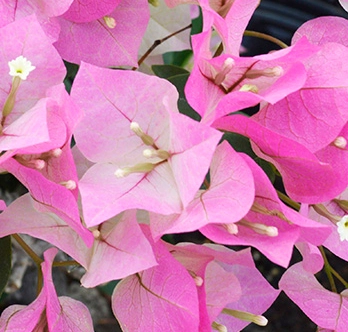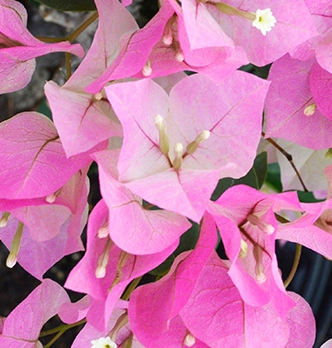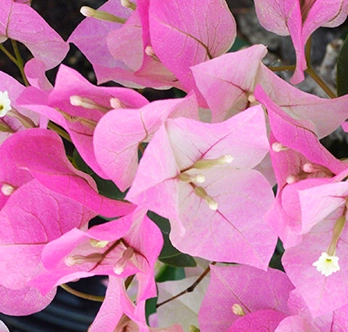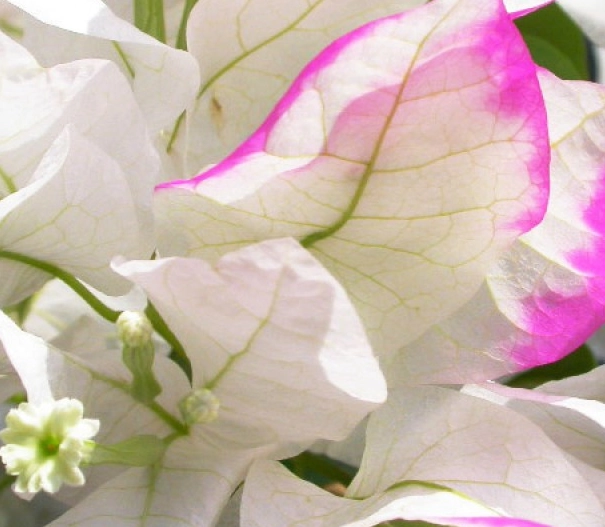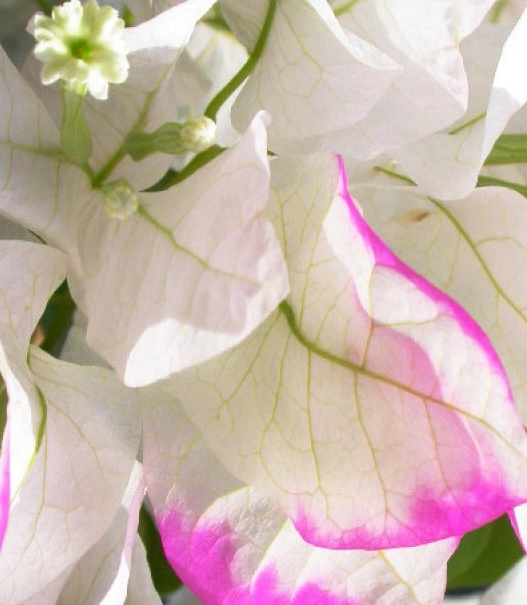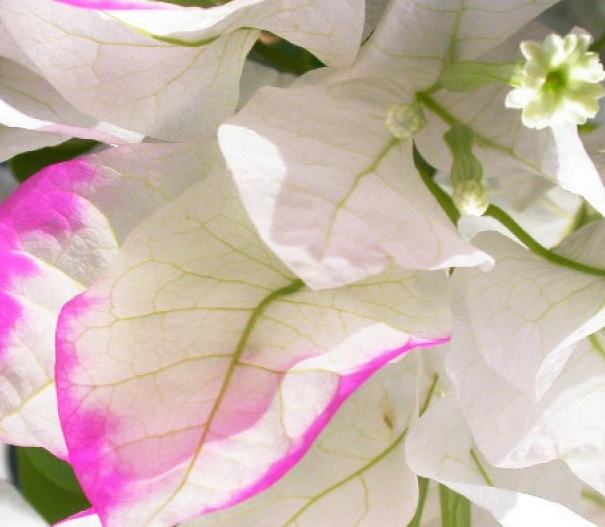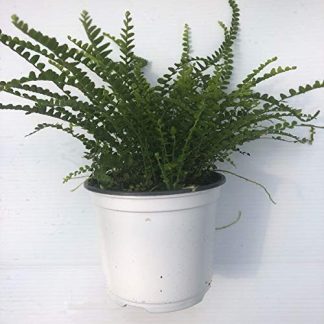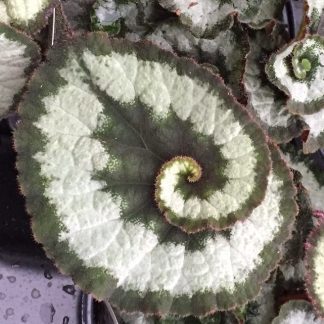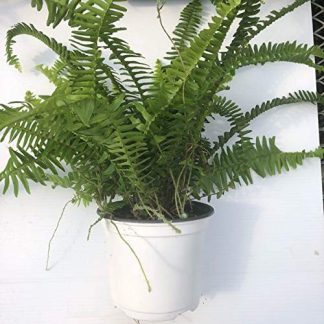Description
Bougainvillea ‘Imperial Thai Delight’: A Pastel Masterpiece for Gardens and Containers
Bougainvillea ‘Imperial Thai Delight’ is a plant that stops you in your tracks. Its soft, shifting colors look like something painted in watercolor. This rare cultivar, first bred in Thailand, combines delicate beauty with the vigor and toughness bougainvilleas are known for. When grown in the right conditions, it delivers a romantic display of pastel bracts that few other tropical plants can match.
In this guide, we’ll explore what makes this variety so unique, how to grow it successfully, and creative ways to showcase it in your garden or home.
What Makes ‘Imperial Thai Delight’ Special?
Pastel Bracts with a Watercolor Effect
Unlike the bold reds and purples you see in most bougainvilleas, this cultivar opens its bracts a creamy white. As they age, soft pink and lilac tones slowly emerge, creating a gentle gradient of color. This ever-changing display makes the plant feel alive—almost like it’s painting your garden with each new flush of growth.
The tiny white flowers at the center of each bract are modest but charming. They add another layer of delicacy to the plant’s overall appearance.
Vigorous and Versatile Growth
Bougainvillea ‘Imperial Thai Delight’ grows quickly and can adapt to different styles of training. It can climb trellises, drape over pergolas, or be shaped into a large, bushy shrub. In tropical and subtropical climates, mature plants can reach 15 to 20 feet. In containers, their growth is more restrained but still lush and full.
Graceful, Yet Armed with Thorns
Like most bougainvilleas, this plant has sharp thorns along its woody stems. They serve as natural protection but also make handling tricky. Gloves are a must when pruning or training vines. Thankfully, the plant’s airy bracts and glossy green leaves balance the thorns with elegance.
Growing Conditions for Success
Sunlight: Full Sun is Key
Bougainvillea thrives on sunlight. Six or more hours of direct sun each day is essential for strong flowering and vibrant color. Plants grown in partial shade will survive but produce fewer bracts and longer, weaker stems.
Soil: Well-Drained and Lean
This plant prefers sandy or loamy soils that drain well. A mix enriched with compost works beautifully, but avoid heavy clay that traps moisture. Bougainvilleas dislike “wet feet,” and soggy roots can lead to rot. When planting in containers, choose a lightweight potting mix and ensure excellent drainage holes.
Water: Deep but Infrequent
Once established, bougainvilleas are surprisingly drought-tolerant. Water deeply, then allow the soil to dry slightly before watering again. Overwatering encourages leafy growth instead of flowers. During blooming season, err on the side of dryness—stress can actually prompt more color.
Temperature: Warmth is Essential
‘Imperial Thai Delight’ is hardy in USDA Zones 9–11 and cannot tolerate frost. In cooler regions, grow it in containers so it can be brought indoors for winter. A bright sunroom or heated greenhouse is ideal for overwintering.
Care and Maintenance
Pruning for Shape and Bloom
Prune after each major bloom cycle to shape the plant and encourage new growth. Remove any dead or tangled stems to improve air circulation. Light trimming throughout the season helps maintain form, but avoid heavy pruning right before flowering periods.
Feeding for Colorful Bracts
Bougainvilleas respond well to regular feeding, but too much nitrogen can lead to abundant foliage with few blooms. Use a balanced fertilizer or one with a bloom-boosting formula (higher phosphorus and potassium) every 4–6 weeks during the growing season. Stop feeding in late fall when growth slows.
Training for Display
The flexibility of this plant allows for many creative uses:
-
Climbers: Train on fences, trellises, or pergolas to create a living curtain of color.
-
Shrubs: Prune into rounded shapes for a bold focal point in the garden.
-
Containers: Let vines cascade from large pots or hanging baskets for a soft, trailing effect.
Blooming Season
In tropical climates, ‘Imperial Thai Delight’ can flower almost year-round, with heavy flushes in spring and fall. In cooler climates, blooms peak in summer when heat and sun are strongest.
Landscape and Decorative Uses
This bougainvillea’s soft pastels make it perfect for serene garden settings. It pairs beautifully with white stucco walls, terracotta tiles, and coastal or Mediterranean-inspired landscapes. Use it to soften fences, brighten patios, or climb over arbors and pergolas.
In smaller spaces, large containers are ideal. Place them by entryways, balconies, or poolside for instant tropical charm. Its trailing habit also works well in elevated planters or mixed container gardens with other drought-loving plants.
Tips for Cooler Climates
For gardeners outside Zones 9–11, container growing is the best option. Here’s how to protect and enjoy it year-round:
-
Plant in lightweight pots: This makes moving indoors easier when temperatures drop.
-
Bring indoors before frost: Place it in the brightest spot you have—ideally a sunroom or greenhouse.
-
Reduce watering in winter: Growth slows in cooler months, so water less often. Allow the plant to rest before resuming regular care in spring.
-
Prune before moving indoors: Light pruning makes handling easier and reduces mess.
Why Gardeners Love ‘Imperial Thai Delight’
This cultivar combines the toughness of bougainvillea with a softer, more romantic look. It’s a favorite for gardeners who love color but prefer subtle tones over the usual bold tropical palette. Its vigorous growth and low-maintenance nature make it rewarding for beginners, while its pastel hues attract serious collectors looking for something unique.
Bring Pastel Magic into Your Garden
Bougainvillea ‘Imperial Thai Delight’ proves that tropical plants don’t have to be loud to be stunning. With its soft gradients, fast growth, and versatility, it adds elegance and energy to any space. Whether cascading from a balcony, climbing a garden wall, or brightening a container on your patio, this plant offers color and charm for months on end.
If you’re searching for a bougainvillea that feels fresh and unexpected, this is the one to grow. It’s a living watercolor painting—delicate in color, bold in spirit, and unforgettable in bloom.

